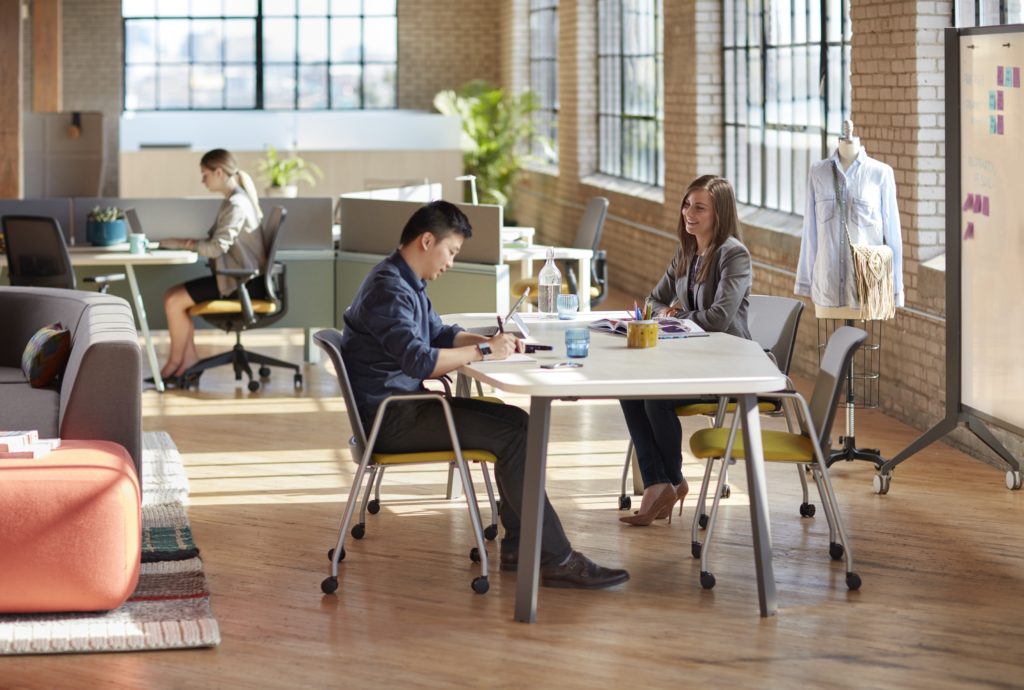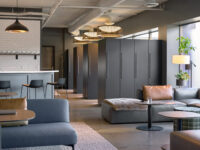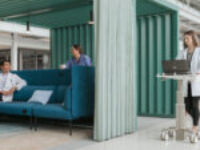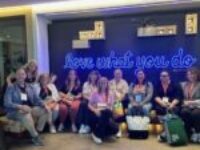Hi everyone!
Chelsea here – I’m finishing up Life of Work this week and I’m really excited to share my reflections on the last chapter! If you haven’t already, grab a copy and join me! If you missed the last post, read it here!
Chapter 6 Framework for Change – Learning a new language
After visiting all these interesting spaces, they developed 4 Key values to shape the framework for their new FLEX model aimed to help approach the design process. Flexible, Legible, Experiential, and Comfortable
Flexible – Humans thrive on the ability to choose, we know this, so as we start to recognize the knowledge worker and adhere more to their complex processes, providing a variety of space will support their desire to choose how they work. As we saw in libraries and extreme teams – these support spaces are key to unlocking the potential for the user. In order to continuously adapt your space as you grow and the processes change, keeping the components inside the space flexible will help with overall cost.
In my personal experience with providing flexible spaces for client, real estate is the biggest hurdle. How do we afford all this additional real estate? Start by evaluating each role and their perspective knowledge processes. Identify what percentage of time needs to be spent on different tasks and shape what type of space will support those tasks. After identifying these spaces for each role, you will start to see overlap between groups and those shared spaces will come together. In addition, common spaces will help to drive adjacencies between groups.
Legible – Now that we have provided choice in the workplace, we need to make sure to clearly identify and communicate the options and provide the road map to those spaces. If we can make this almost intuitive people will not hesitate to move from space to space to complete multiple tasks, allowing for the individual and their teams to be more effective.
Technology needs to play a new role in how we can accomplish this in the workplace. Have you ever gotten lost in a hospital, mall, or airport? These are all examples of spaces where we have a lot of choices to make and they now have apps to help lead you to where you want to go, think Google maps for buildings. Now, we don’t need step by step directions to get to the team touch down space but it would help eliminate confusion/stress if we could see what spaces were available or while in those spaces use technology to be productive.
Experiential – Gray is safe but color is expressive, energizing, and connects people to a space. Not only color but depth, texture, and light can make such an impact on people psychologically. We learned in the theatre and urban spaces how drawn people can be to these elements.
My favorite experience to create in space is bringing life and landscape to the office with live plants. In my opinion, nothing gives back to your well-being more than absorbing the benefits of greenery through all 5 senses. Some offices go to the extent of having plants you can pick and eat for lunch. A few great ideas to implement this element of wellness would be a live wall, flavored waters in addition to morning coffee, a fruit and vegetable delivery service, or scheduled work out classes throughout the day. Do something different to give back to your employee’s well-being and I promise you will see the ROI through their engagement.
Comfortable – Last but most defiantly not least, people need to be comfortable with their space in order to be efficient. They aren’t talking about how soft the task chair seat cushion is, instead how comfortable are they in the workplace to achieve their goals. Do they have the right tools to support their flow of work and the correct amount of privacy to focus throughout the day?
This is where truly taking the time to understand how each role works is critical. Haworth has provided a bunch of tools for us to slow down and evaluate peoples complex work processes, so we can be successful in providing them the tools they need. One size does not fit all anymore and technology is changing paper flow, paper storage, and ways of communication. One good example of this is how personal storage within he station is changing. People aren’t storing paper as much anymore – if you open up lateral file drawers you will see gym bags, purses, the whole kitchen cabinet. Storage can also be what drives price up in the station so strategically evaluating storage needs may also save money that you can put back into share spaces or overall impact spaces.
Final thoughts!
In conclusion – this process too is complex and the FLEX model they have created is designed to support companies along their own individual journeys to identify, enhance, and implement cultural changes to better support the knowledge worker. The principles behind the FLEX model go past the functional and physical well-being of the employee and drive motivation to do good work through community, a sense of belonging, and inspiring spaces. While it does not provide a check list for success it suggests ways to think differently when approaching the concept of workplace, real estate, and overall human experience.
What better way to improve the workplace landscape than to look for inspiration in the places people already find enjoyment, satisfaction, and delight? Life of Work has reminded me why I do what I do. It is easy to get caught up in the stress of daily deadlines but at the end of the day, our goal as interior designers is to create a safe and motivating environment where people thrive, and companies grow. I hope you walk away with some new ways to approach the design process!




